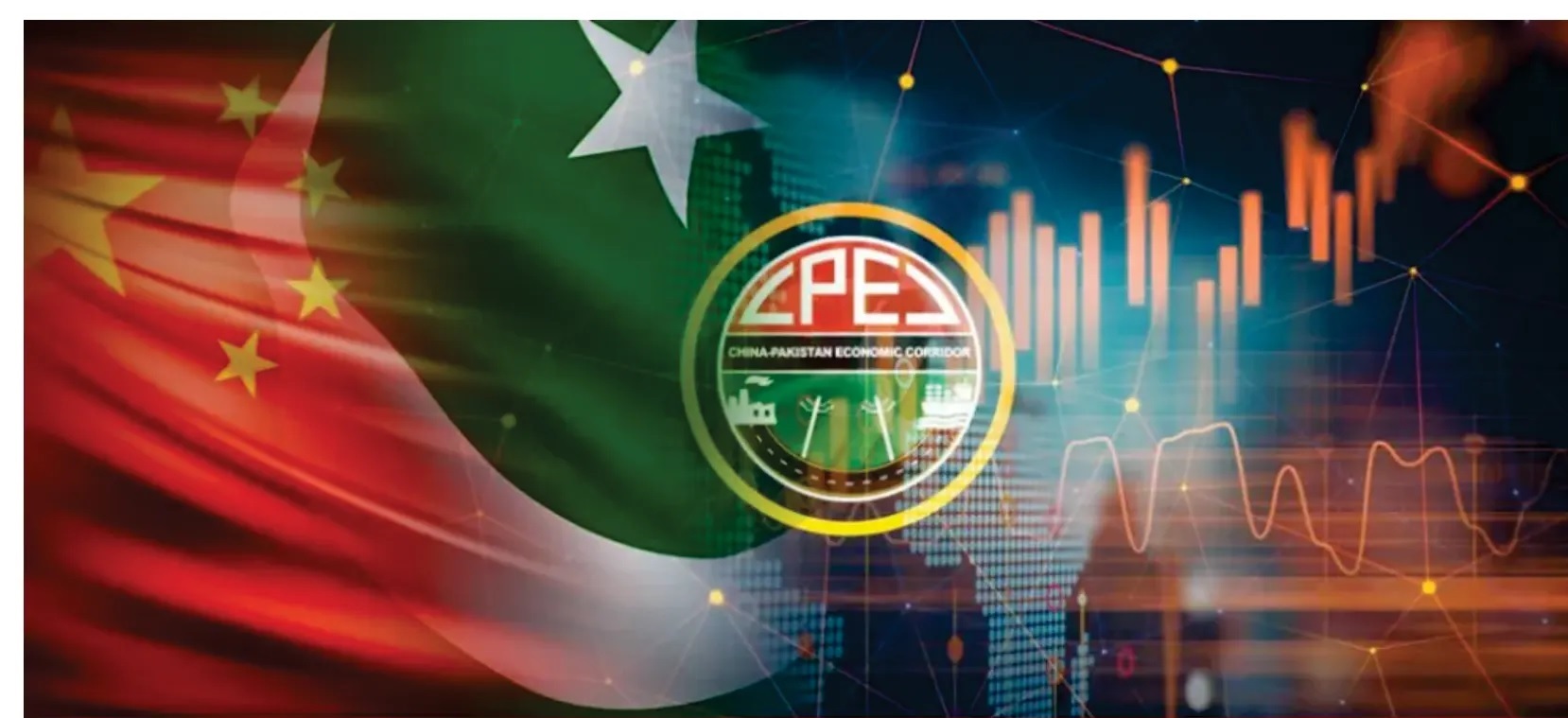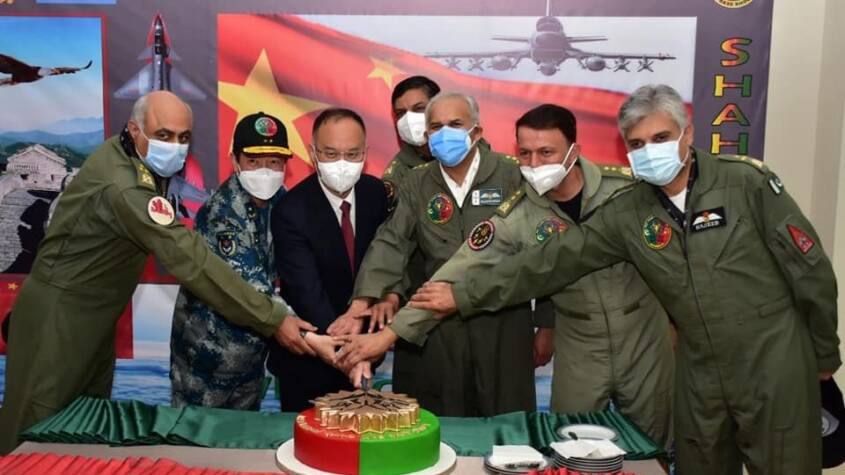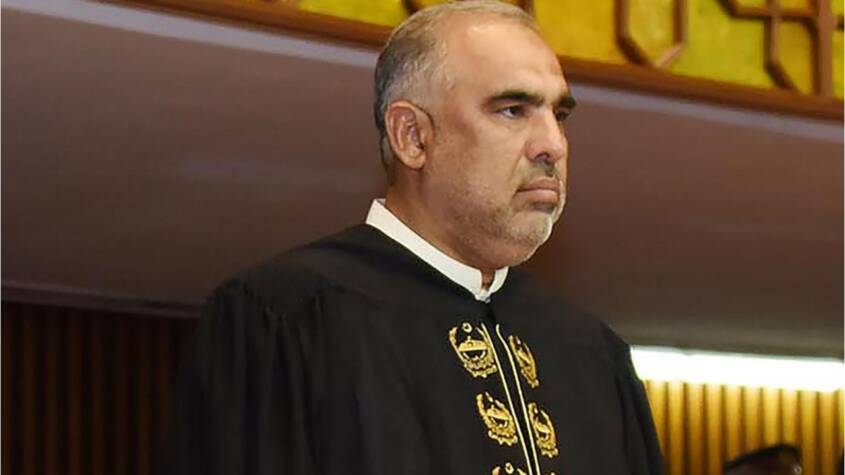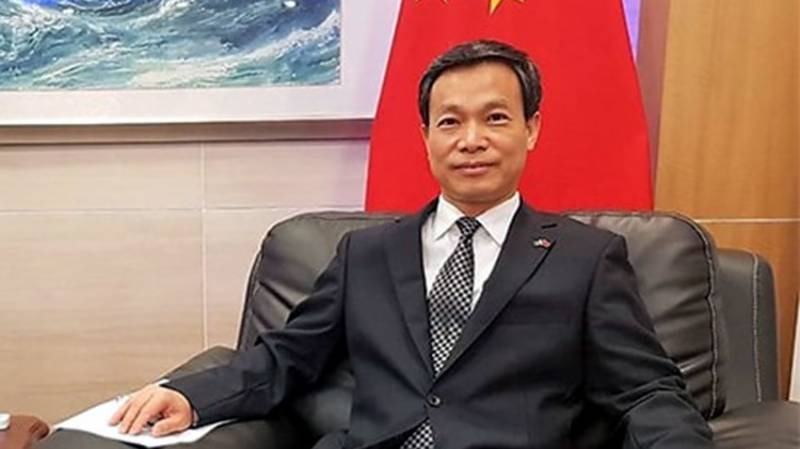DESPITE facing multiple security and political challenges from both domestic and international fronts, the China-Pakistan Economic Corridor (CPEC) is certainly shaping up as a win-win project for both China and Pakistan. Of all the six connectivity corridors being built under the visionary concept of Belt and Road Initiative of President Xi Jinping, CPEC is the only corridor that has been continuously targeted by the Western world and has faced malicious propaganda right from inception.
The reasons for this negativity towards CPEC finds its roots in its extreme significance for the smooth functioning of BRI project. While the other five corridors cross more than two countries, are considerably long corridors, are all east-West oriented and none is as strategically located as CPEC. This is the only bilateral, shortest, North-South corridors that unites the other five corridors in the middle like the buckle of a belt and provides a direct access to China to the Indian Ocean at Gwadar-located outside the mouth of Harmuz.
The geostrategic, geopolitical and geo-economic associated with CPEC, particularly in view of the changing dynamics in the region and the increasing USA- China. If this competition is not managed well, the possibility of any future confrontation being played out in the Indian Ocean cannot be ruled out. A deep sea port at Gwadar to which China has a direct road link is therefore, a prime target for Western and Indian politicians, governments and media alike.
Although there are multiple challenges for effective demonstration of the transformational and positive impact of CPEC on the lives of people in Pakistan, it is of paramount importance for both China and Pakistan to forcefully counter the Western propaganda and strongly negate unfounded and negative aspersions caused by some cynical sections on growth trajectory of BRI and CPEC.
Strategic communication plays a key role in managing the transition and winning hearts and minds of various stakeholders. We must build a strong narrative in support of BRI and particularly CPEC and back it with dedicated efforts to ensure the infrastructure that has been developed meets the development aspirations of the people of Pakistan and the region. For doing this we need; a. Creation of credible and independent evidence about the CPEC and its impact on the lives of people; b. Widening CPEC ownership among political, institutional, private sector and general public stakeholders; and c. Pro-active engagement with international media and think tanks about various aspects of CPEC, particularly on regional stability, debt sustainability and climate change.
Traditionally, China and Pakistan have cooperated closely at the strategic and political levels. CPEC is a symbol of the determination of the two nations to expand their bilateral collaboration economically as well. CPEC is a milestone that signifies this shift. CPEC not only serve as a roadway that simply connects point A to point B—this project is designed to do much more. The corridor aims to facilitate multispectral economic cooperation in finance, trade, energy and industry among other sectors.
CPEC will not only reduce the distance for China to trade with the outer world but will also drastically cut down the cost of products because of faster and cheaper transportation of goods. There is no doubt that CPEC would ultimately help in creating a regional economic block of the three billion people of the region through improved regional integration and connectivity and Pakistan will play a critical role being located in the centre of three engines of growth – South Asia, Central Asia and China.
In the Joint Statement issued after the visit of Prime Minister Shehbaz Sharif to Beijing, the two leaders recognized that CPEC has been a pioneering project of the Belt and Road Initiative. Since the launch of CPEC, the two sides have adhered to the principle of “planning together, building together, and benefiting together,” and promoted the construction of CPEC to achieve fruitful results, which has changed the development landscape of Pakistan, benefited its people’s well-being, and promoted the integrated development of China and Pakistan.
The first phase of CPEC has already contributed to overcome energy crisis, build modern infrastructure and create enormous job opportunities in Pakistan. The CPEC has undeniably brought numerous benefits to Pakistan’s economy. These developments have had a positive impact on the lives of millions of Pakistanis by providing better access to resources and creating employment opportunities. Furthermore, CPEC has strengthened bilateral ties between China and Pakistan, fostering an all-weather strategic cooperative partnership. This collaboration has not only bolstered economic and financial cooperation, but has also facilitated people-to-people exchanges and cultural ties, promoting mutual understanding and friendship between the two nations.
So far China has invested almost $35 billion, primarily in energy and infrastructure projects. China’s investment in Pakistan has also been instrumental in boosting the country’s foreign direct investment and attracting other international investors to the region. The CPEC’s success has positioned Pakistan as an attractive destination for businesses seeking to capitalize on the opportunities offered by this strategic corridor. The initiative has not only upgraded Pakistan’s infrastructure, but has also opened up job opportunities for skilled labour. This has significantly contributed to the labour market, which was abundant with skilled labour but no job vacancies.
To date China has completed major projects under CPEC in Gwadar that, in addition to Gwadar Port, include the Gwadar Power Plant, the distribution of 2,000 boat engines to the fishermen of Gwadar, the Khuzdar-Panjgur transmission line that connects Makran with the national grid, the new Gwadar International Airport project, the Pak-China Friendship Hospital, the Pak-China Technical and Vocational Institute in Gwadar, the Gwadar East Bay Expressway project and the Gwadar Free Zone.
China and Pakistan have strongly reaffirmed their commitment to CPEC not only on the tenth anniversary of its last year but also during the recent visit of Prime Minister Shehbaz to China. The leadership of both countries have resolved to speedily complete the project, particularly the second phase of industrialization of Pakistan and revolutionizing the agriculture sector.
They confirmed that after the successful first decade of CPEC, the two sides are committed to carrying out the eight major steps for supporting high-quality Belt and Road cooperation, forging an “upgraded version” of CPEC by jointly building a growth corridor, a livelihood-enhancing corridor, an innovation corridor, a green corridor and an open corridor, aligning with Pakistan’s 5Es Framework based on Exports, E-Pakistan, Environment, Energy, and Equity & Empowerment to better benefit the two countries and their peoples, working together to build CPEC into an exemplary project of high-quality building of Belt and Road cooperation.
The two leaders put great emphasis on industry cooperation under the framework of high-quality CPEC development and signed the Action Plan for Framework Agreement on Industrial Cooperation under CPEC to strengthen industrial cooperation in various areas. China reiterated its commitment to Pakistan’s industrialization, and will encourage Chinese companies to invest in Pakistan’s Special Economic Zones.
Pakistan agreed to optimize its business environment and policy framework to further facilitate Chinese investment. The two sides reiterated that CPEC is an open and inclusive platform for win-win cooperation, and welcomed third parties to actively participate in the CPEC cooperation priority areas such as industry, agriculture, ICT, science and technology and mining.
Displaying their solid resolve and commitment to ensuring the success of CPEC the two leaders also took the following important decisions:
- Reaffirmed the importance of the up gradation of ML-1 under the CPEC framework as it is of strategic significance to Pakistan’s socio-economic development.
- Recognized that the Karakoram Highway (Raikot-Thakot) realignment project is important for the smooth operation of the only land-based channel between China and Pakistan and signed the framework agreement of the project.
- Agreed to advance upgradation of the inspection infrastructure of the Khunjerab-Sost pass so as to realize the all year-round function of the Khunjerab-Sost pass at an early date.
- Recognizing the significance of Gwadar Port as an important node in cross-regional connectivity and reiterated the need to speed up the development of the auxiliary infrastructure of the Gwadar Port in order to fully realize the potential of the coastal city, especially as a transhipment hub with a shipyard.
- Also hailed the completion of New Gwadar International Airport which will soon be operationalized connecting Gwadar to the world.
- Agreed to strengthen long-term planning for mining cooperation, promote the implementation of the Agreement to Strengthen Mining and Industrial Cooperation under the CPEC Framework collectively, and take actions such as geological survey, joint geology and minerals research and talent training.
- Agreed to actively encourage Chinese companies to invest in the mining industry of Pakistan, and strengthen the planning of mining industrial parks, including downstream mineral processing.
- Expressed its willingness to strengthen cooperation with Pakistan in such areas as offshore oil and gas resources, and natural gas hydrate. The Chinese side would encourage Chinese companies to actively participate in the development of offshore oil and gas blocks of Pakistan.
- Resolved to carry out practical cooperation for modernizing agriculture in Pakistan in areas such as seed technology, crop cultivation, drip irrigation, prevention and control of animal and plant diseases, agricultural mechanization, production capacity cooperation, and agricultural technology exchanges.
- Agreed to strengthen development of the China-Pakistan digital information channel, and promote the integration of information and communication technology infrastructure and develop an innovation corridor through Pakistan.
- Expressed commitment to further strengthening collaboration in clean energy sector and encouraged Chinese companies to engage in hydropower and other relevant projects and agreed to launch a new phase of energy cooperation, by modernizing production, transmission and distribution systems to reduce line and other losses.
It is important to note that China expressed its unwavering commitment to further implementing more “small yet smart” livelihood programs in Pakistan. For achieving this China encouraged Pakistan to promptly implement post-disaster reconstruction aid projects aided by China in Pakistan at an early date. The two sides welcomed CIDCA’s enhanced contributions to complementing the efforts of the Government of Pakistan in promoting socio-economic development and creating further livelihood opportunities for the people of Pakistan as envisaged under Global Development Initiative (GDI).
Recognizing the importance of artificial intelligence in development, China will now jointly promote the development of artificial intelligence technology. In this regard China will provide 200,000 scholarships to train Pakistani youth in AI in Huawei. Similarly China has also agreed to the expansion and enhancement of space cooperation between the two countries which will serve as a booster for Pakistan to strengthen its scientific and technological capabilities, drive economic growth, and safeguard national security.
The Joint statement issued at the end of the recent visit amply reiterates that China and Pakistan are All-Weather Strategic Cooperative Partners and ironclad friends, and the two countries have always understood, trusted and supported each other. Since the establishment of diplomatic ties 73 years ago, China-Pakistan relations have stood the test of changing international environment and have been as solid as a rock, and as unshakable as a mountain. The China-Pakistan relationship is a priority in their foreign relations. Therefore, the two sides enjoy unbreakable strategic mutual trust, fruitful practical cooperation in various fields, and maintain close coordination on international and regional affairs.
Both China and Pakistan would continue to view the relationship from a strategic height and a long-term perspective, take effective measures to safeguard the common interests of China and Pakistan, promote socio-economic development and well-being of the two peoples, work together to jointly uphold regional peace, stability, development and prosperity, and accelerate the building of an even closer China-Pakistan Community with a Shared Future in the New Era.
CPEC has been well-received by all segments of society in both countries and they regard it as a new source of potential synergy between their respective national development strategies, which has already helped them translate their close political cooperation into multifaceted economic cooperation, attain mutual benefits and achieve win-win outcomes. Once completed CPEC will realize the visions of leadership of both China and Pakistan for regional connectivity and prosperity.
Pakistan serves as a crucial bridge between China and Central Asia, South Asia and the Middle East. Security and stability in Pakistan will ensure the security and development of the all the sub regions of Asia. Pakistan knows that no other country gives such high strategic importance in its economic relationship with Pakistan as China does. Pakistan, therefore, greatly values the economic corridor and views it as mutually beneficial in terms of politics and economic development.
CPEC will help Pakistan advance from being a lower-middle-income nation to an upper-middle-income nation by 2025. To achieve this goal, Pakistan needs to attract increasing amounts of foreign investment which can come once the SEZs are fully operationalized. It is heartening to see that some of the SEZs already inaugurated are rapidly beginning to establish themselves and with the passage of time will emerge as powerful drivers of industrial growth and modernization in Pakistan.
China and Pakistan have taken positive measures to help set up the CPEC for success. Nevertheless, Pakistan’s domestic situation is still in a flux. Country’s political and security conditions must turn a corner towards stability thus ending this period of ambiguity and uncertainty if the full potential of CPEC, the flagship project of BRI and Gwadar Port, the jewel in the CPEC, is to be realized. With careful planning, transparent governance and effective utilization of resources, the CPEC can continue to be a catalyst for positive change in Pakistan and deepen the economic cooperation between China and its all-weather friend Pakistan.
















